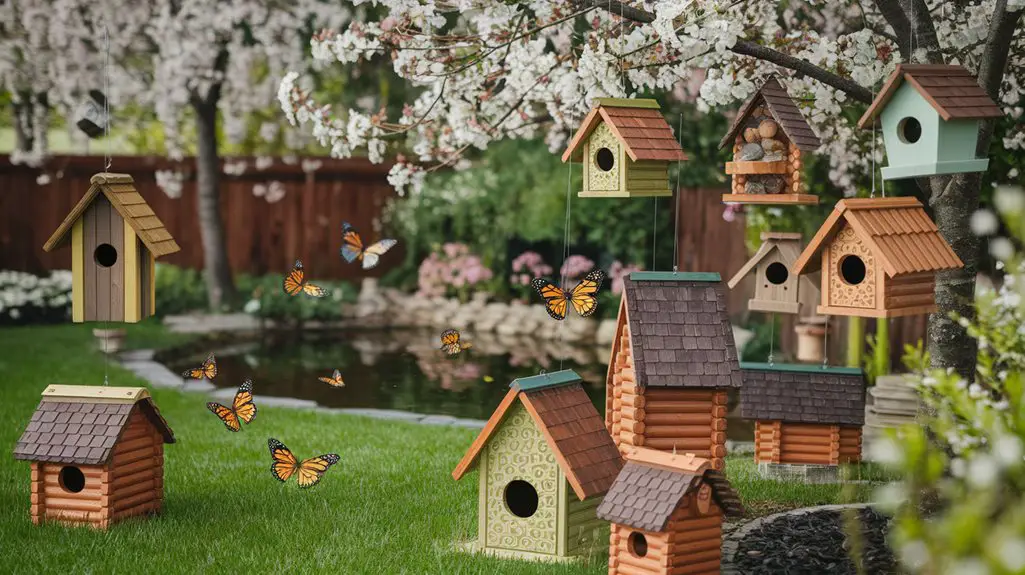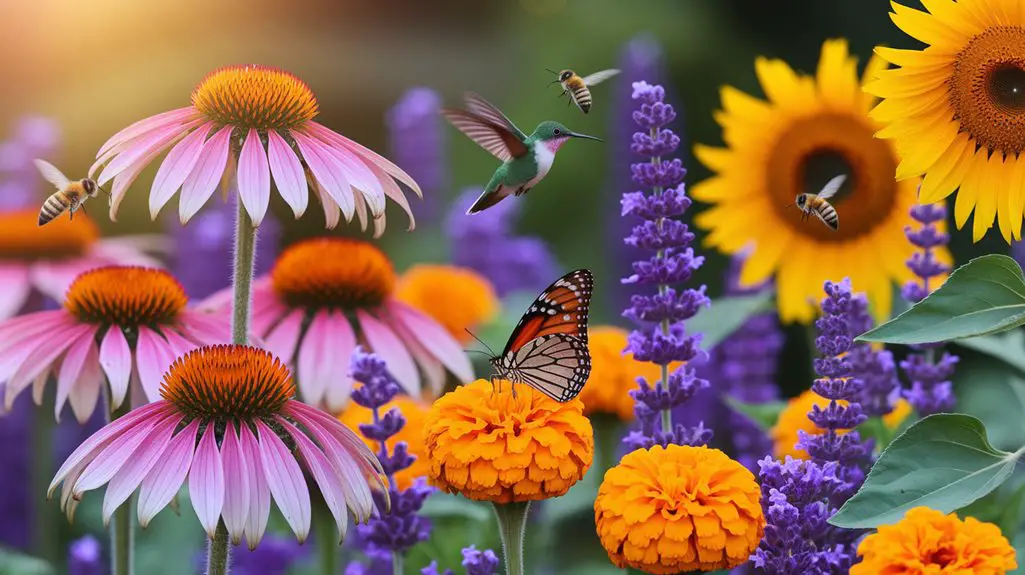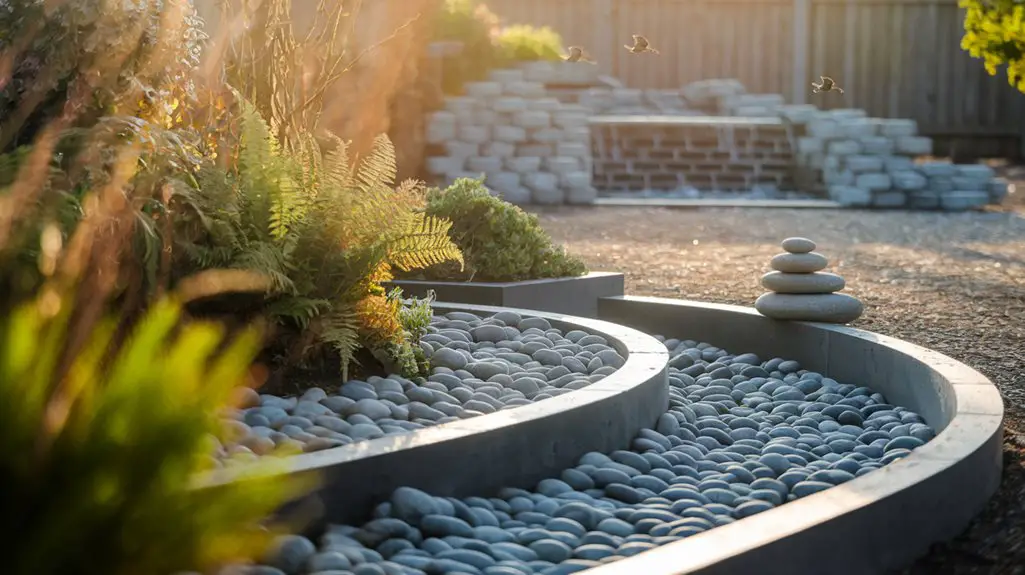Enhancing your outdoor space with feeders and houses supports biodiversity in your backyard. By utilizing sustainable materials and understanding the unique needs of local species, you'll create inviting habitats that promote ecological harmony. Whether you're welcoming feathered friends or curious squirrels, each structure is a step toward nurturing wildlife. As you explore the intricacies of designing these shelters, you'll discover the joy of fostering a lively ecosystem right at home. What's your first step?
Essential Materials and Tools for Building Wildlife Feeders
Building wildlife feeders in your backyard offers an engaging way to support biodiversity while observing local fauna.
Begin by selecting eco-friendly materials. Opt for untreated wood, as chemicals can harm wildlife. Reclaimed wood not only reduces waste but also adds character. Use galvanized nails or screws to prevent rusting, guaranteeing longevity in varying weather conditions.
You'll need a saw, hammer, and drill for cutting and assembling parts. A measuring tape guarantees accuracy, while sandpaper smooths edges, preventing animals from injury.
Consider non-toxic, water-based sealants to protect feeders from moisture without harming the environment. Wildlife-safe adhesives can be useful but verify they're chemical-free. Incorporating sustainable pest management techniques can further enhance your garden's ecosystem.
Prioritize sustainable materials, tools, and methods to promote a balanced ecosystem and support your local wildlife.
How to Design a Birdhouse for Your Backyard
Designing a birdhouse for your backyard is a rewarding project that benefits local avian species and enhances your outdoor space.
To maximize the ecological impact, focus on these essential design elements:
- Species-Appropriate Dimensions: Tailor the birdhouse size and entrance hole diameter to the target bird species, guaranteeing it meets their specific nesting needs.
- Ventilation and Drainage: Include small holes near the top for airflow and bottom holes for water drainage to create a healthy nesting environment.
- Sustainably Sourced Materials: Use untreated wood and eco-friendly materials to prevent harm and assure durability, contributing to conservation efforts.
Additionally, incorporating native plants around the birdhouse will provide natural food sources and shelter for the birds.
Maintaining these considerations will help attract birds and support local biodiversity.
Thoughtful birdhouse design contributes not only to backyard beauty but also to avian conservation.
DIY Squirrel Feeders to Attract Playful Visitors
While enhancing your garden for birds, don't overlook the impact you can make by inviting squirrels through thoughtfully crafted feeders.
Constructing a DIY squirrel feeder enriches your backyard ecosystem and offers the creatures a nutritious food source. Select eco-friendly materials like untreated wood to guarantee safety and durability.
Position the feeder where squirrels can easily access it but predators can't, maintaining a balanced food web. Fill it with nuts, seeds, and fruits that mimic their natural diet, promoting healthy wildlife interactions.
Ascertain you monitor the feeder to prevent overdependence, as squirrels should still forage naturally. Additionally, incorporating native plants in your garden can further support wildlife by providing shelter and additional food sources.
Through mindful feeder placement and material selection, you contribute to local biodiversity conservation, supporting these agile mammals without disrupting ecological harmony.
Creating Sheltered Spaces for Pollinators
To nurture pollinator populations in your garden, it's essential to create sheltered spaces where they can thrive. Pollinators like bees, butterflies, and hummingbirds play a key role in ecosystem health. Providing safe havens helps maintain their populations.
Here's how you can support them effectively:
- Plant Native Flora: Choose native plants that bloom at different times, ensuring a continuous food source throughout the seasons. This will enhance biodiversity and cater to various pollinator needs.
- Include Water Sources: A shallow dish with stones for landing can be a simple yet effective water station, aiding hydration without drowning risks.
- Construct Nesting Sites: Use untreated wood or bamboo to assemble bee hotels, offering refuge for solitary bees that contribute greatly to pollination.
Additionally, creating a diverse habitat with pollinator-friendly plants will encourage a variety of species to visit your backyard.
Your efforts will foster a thriving, balanced ecosystem.
Crafting a Bat House for Natural Pest Control
Building a bat house in your garden can greatly enhance natural pest control while supporting local bat populations. Bats consume vast numbers of insects, including mosquitoes and garden pests, making them crucial allies in maintaining ecological balance. Additionally, managing backyard wildlife populations effectively can lead to a healthier ecosystem overall. Craft a bat house using untreated, rough-cut wood; its texture gives bats a firm grip. Design the interior with vertical chambers no more than 3/4 inch apart to mimic crevices bats love. Add a sloped roof to repel rain and guarantee the structure is well-ventilated to prevent overheating.
Tips for Maintaining and Placing Your Wildlife Feeders and Houses
Here are some tips to guarantee you're supporting wildlife responsibly:
- Regular Cleaning: Clean feeders and houses every two weeks to prevent disease spread. Use a dilute bleach solution and rinse thoroughly.
- Optimal Placement: Place feeders and houses in sheltered locations, avoiding areas prone to predators. Choose spots that mimic natural habitats to encourage use.
- Monitor Feeding: Assess food supply often, adjusting amounts to prevent waste and pest attraction. Use native seed varieties to benefit local species.
- Additionally, consider creating a frog-friendly oasis in your garden, as this can provide a safe environment for amphibians and enhance biodiversity.
Conclusion
By embracing the charm of custom wildlife abodes, you're not just upgrading your garden; you're cultivating a vibrant oasis for our avian and furry counterparts. With eco-conscious choices and meticulous design, these handcrafted refuges become sanctuaries, offering sustenance and shelter. Nurturing native plants further enriches this ecosystem, wrapping your outdoor haven in a tapestry of biodiversity. Begin this harmonious journey and witness the delightful symphony of life as nature's guests grace your verdant shelter with gratitude.



